People set out on a journey whenever they think about making a purchase. It could be a car, home, or the right shoes for a night out on the town. No matter what it is, this journey takes them through various steps, contemplations, and decisions until they ultimately buy.
As a sales professional, it’s critical to understand this process. Doing so ensures that you can provide what each lead needs at the right time in their journey to create relationships and secure purchases. That’s especially important in pool and spa sales.
What Is the Buyer’s Journey?
A buyer’s journey is the path they take from thinking about a purchase to making one. The process includes becoming aware of their needs, considering and evaluating those needs, and then deciding to purchase a service or product.
As noted by HubSpot, there are three stages in this process to understand:
The Awareness Stage
In this stage, the buyer just becomes aware that there is a need or problem. They don’t know the solution yet, but they are thinking about it. In this stage, they feel the symptoms of the problem, and they want to find a way to solve it.
During this stage, your pool or spa buyer is thinking about a problem. They may hate the hot days of summer but cannot get to the community pool often. They may have gone on vacation and experienced a spa and wish they could duplicate that at home. They may have a damaged pool and need to figure out what to do about it.
Consideration Stage
At this point, the buyer better understands the problem to be solved and considers the options they have to solve the problem. Most often, they are looking for helpful information to learn how to solve their problem.
At this point, your pool customer knows they want a pool. They are not sure just yet how to make that happen, though. They are looking for information, researching options, and considering all options available. The spa customer could be comparing models, considering features, and even looking at the cost to install.
Decision Stage
At this point, buyers may know what they want, and they are likely to develop a strategy or solution on how to get it. They evaluate their options and eventually decide on the right provider of the solution they’ve chosen. Often, buyers make a short list of options and then work on determining why one is better than another.
In the pool world, this may be looking at different contractors and considering the various options they have in pool designs. They may consider the best method for investing, make a list of the providers they want to work with, and then narrow it down.
Spa buyers are doing the same. They are making a list and trying to compare options. They still need information, but they know what they want. They are typically considering all of the options for making that decision to buy.
How to Use the Buyer’s Journey to Create Sales
You may have your favorite closing techniques, and you are likely already spending a lot of time marketing. The buyer’s journey doesn’t mean you should stop those activities. However, it may help refine them to get the best possible outcome on a more consistent basis.
With larger investments like a pool and spa, companies need to be better able to meet the buyer's expectations at every stage of this experience. Here are some things to consider.
Educate Them Where They Are
Start with creating informational resources that your buyer can use to gain the insights they need. If they have chronic back pain, an article about how spas can help reduce that pain may be helpful, for example. This should not be sales-based material but educational material.
Tell Them How To Get More Information
Be sure your prospective buyer knows how they can get more information without spending any money to do so. Provide clear steps they can take to get more information.
Alleviate Any Misconceptions
If there are any misconceptions about your business or your products, alleviate them with clear information. That may mean having a Q&A about costs, timelines, value, and the ease of the process.
When you work on creating content that helps your prospective client move through the buyer’s journey, you’ll be helping them to decide to work with you — the company that’s educating them.



